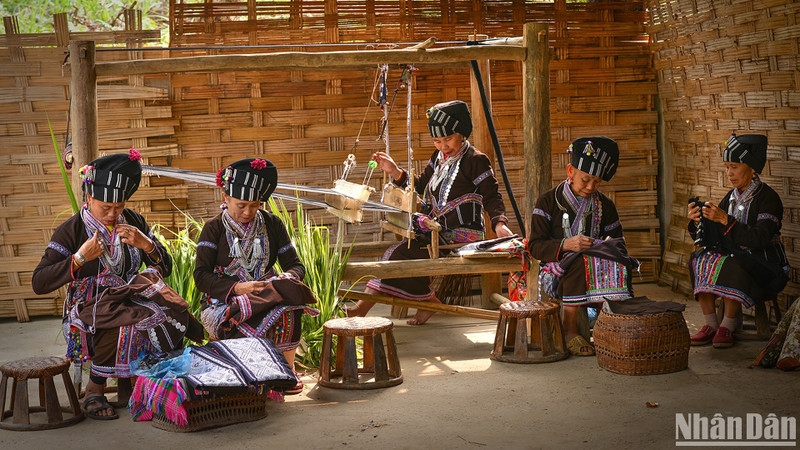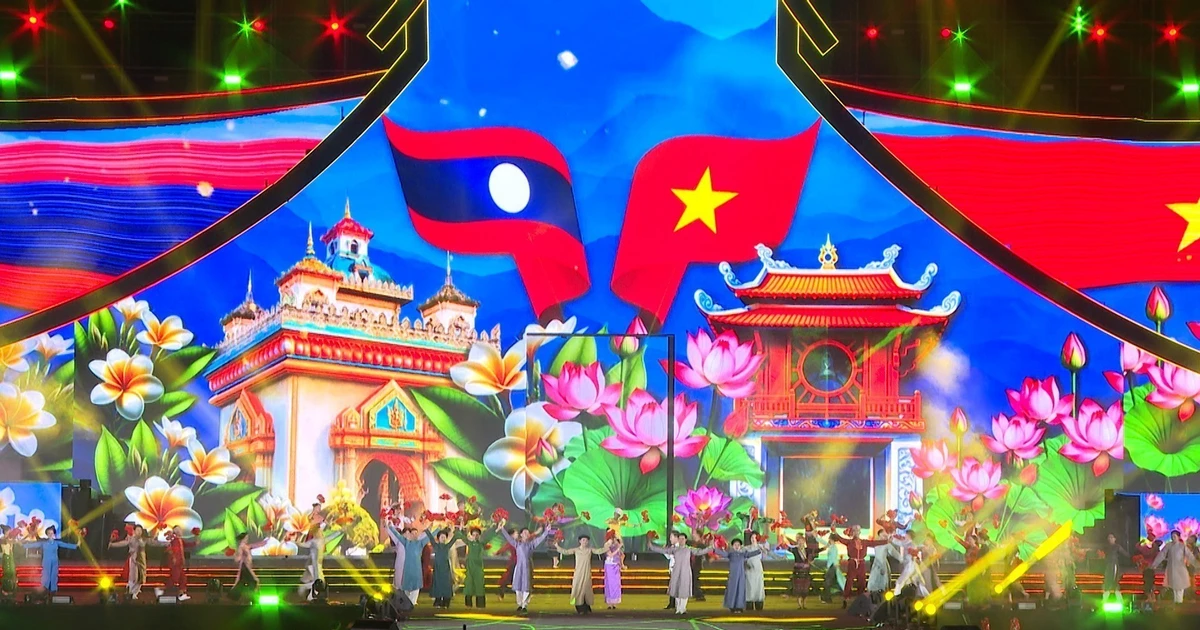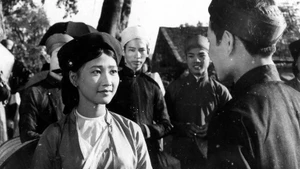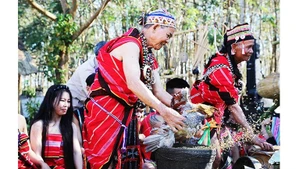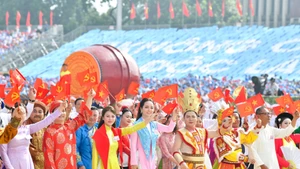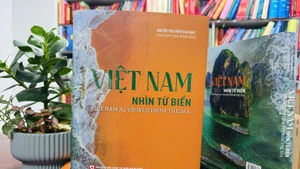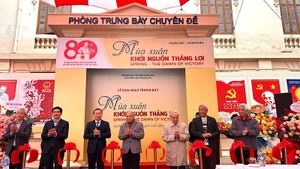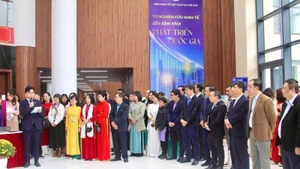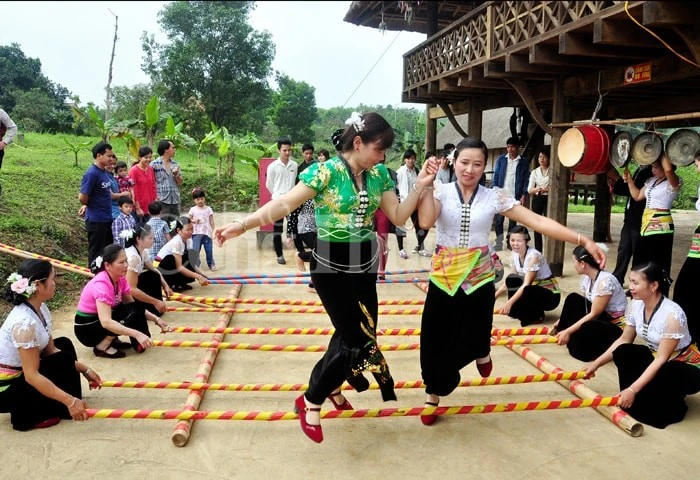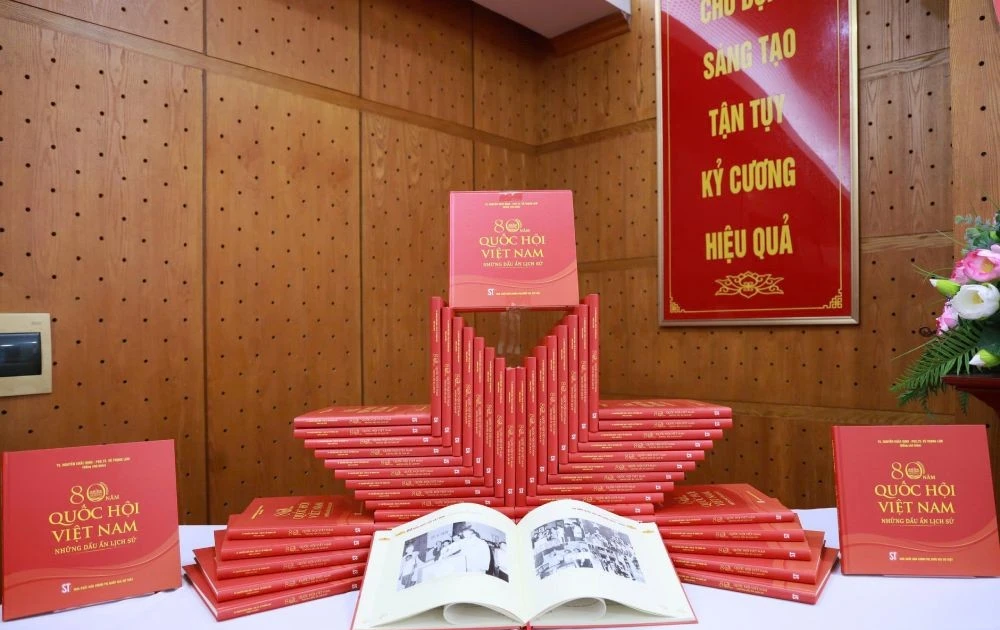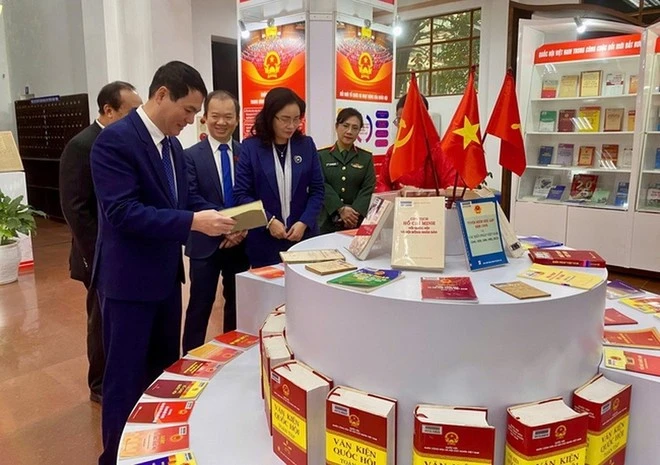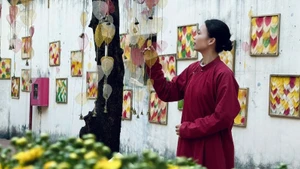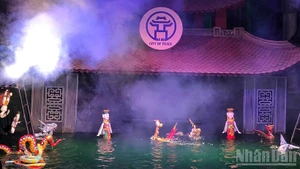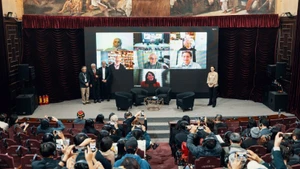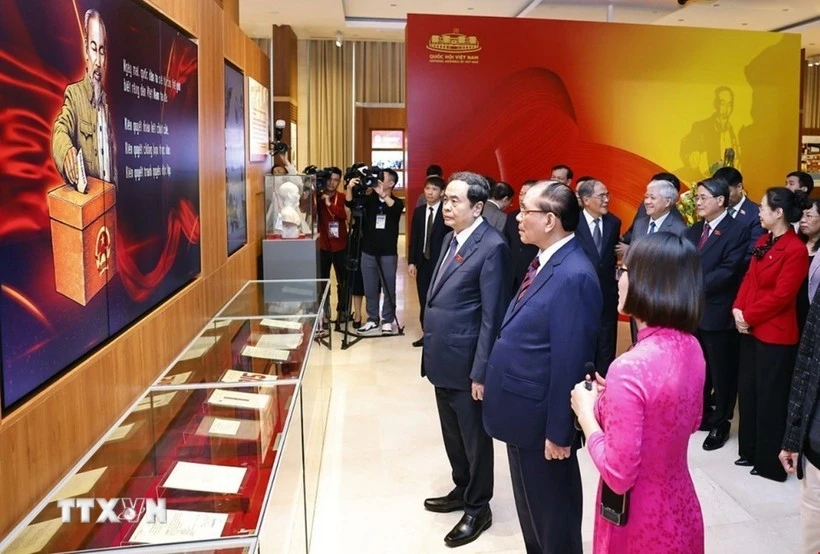Brocade weaving: The artistry of Lu ethnic women
In Khun Ha Commune, the tradition thrives quietly against the march of modernity. Amid the pulse of daily life, Lu women keep their looms humming, sustaining a cultural inheritance as rich as the indigo that colours their cloth.
The Lu community has a deep-rooted legacy of cotton cultivation, hand weaving, and embroidery. Following the harvest season, stilt houses come alive with rhythmic shuttle clicks and animated exchanges between mothers, grandmothers, and daughters.
Using local cotton and flax dyed with forest leaves, the Lu ethnic women produce dark indigo fabric as a canvas for their intricate embroidery.
Using local cotton and flax dyed with forest leaves, the Lu ethnic women produce dark indigo fabric as a canvas for their intricate embroidery.
Unlike other ethnic groups who weave motifs into cloth, Lu artisans embroider after weaving—stitching geometric shapes, spirals, flowers, suns, and other meaningful symbols directly onto the finished textile.
Dominant colours such as red, yellow, and green contrast beautifully with the deep indigo, forming ensembles that are both striking and subtle. Each motif carries spiritual significance and reflects folk knowledge passed down through generations.
Brocade is not just a fabric—it’s a living archive of Lu ethnic culture. Each stitch carries ancestral wisdom, experiences, folk knowledge, aesthetic concepts, and the pride of a community.
Preserving and promoting the crafting heritage
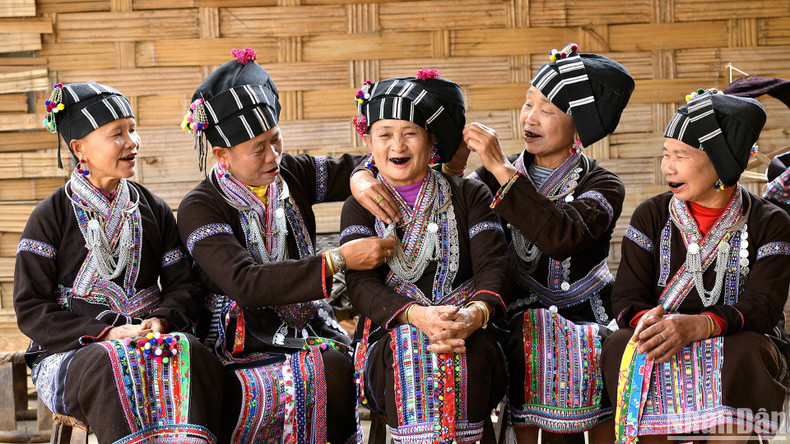
Despite its beauty, Lu brocade weaving faces challenges. The daily use of ethnic clothing has declined, especially among young people. Many youths leave the village to work elsewhere, with fewer showing enthusiasm for the ancient craft. Sales are limited due to high costs and a narrow market that mainly caters to festivals or occasional tourism.
Still, elder women persevere—teaching indigo dyeing, embroidery, and skirt-making for weddings and communal events. Some families continue crafting items like scarves, wallets, and handbags, aiming to tap into tourism-linked markets.
In response, local authorities have initiated weaving courses for women and youth. Some families have formed production groups to maintain traditional weaving and embroidery techniques and eyed developing handicraft products to boost local tourism.
In the quiet hours of dawn and dusk, the shuttle’s rhythm echoes the resilience of the Lu women of Khun Ha—guardians of a vibrant legacy woven into the foothills of the Hoang Lien mountain range.
Under the National Target Programme for Socio-Economic Development of Ethnic Minority and Mountainous Areas, efforts have been made to preserve and develop the unique cultural identity of Viet Nam’s small-population ethnic groups, including the weaving craft of Lu people in Lai Chau province.
Surveys and research now include brocade weaving as a core cultural element. Support includes providing materials, training, and promoting products at cultural festivals and photo exhibitions.
The Project for the Preservation and Promotion of Traditional Costumes of Việt Nam’s Ethnic Minorities also plays a key role in introducing Lu brocade to a wider audience. Through these actions, the unique essence of Lu identity has a platform to shine.
In the quiet hours of dawn and dusk, the shuttle’s rhythm echoes the resilience of the Lu women of Khun Ha—guardians of a vibrant legacy woven into the foothills of the Hoang Lien mountain range.
